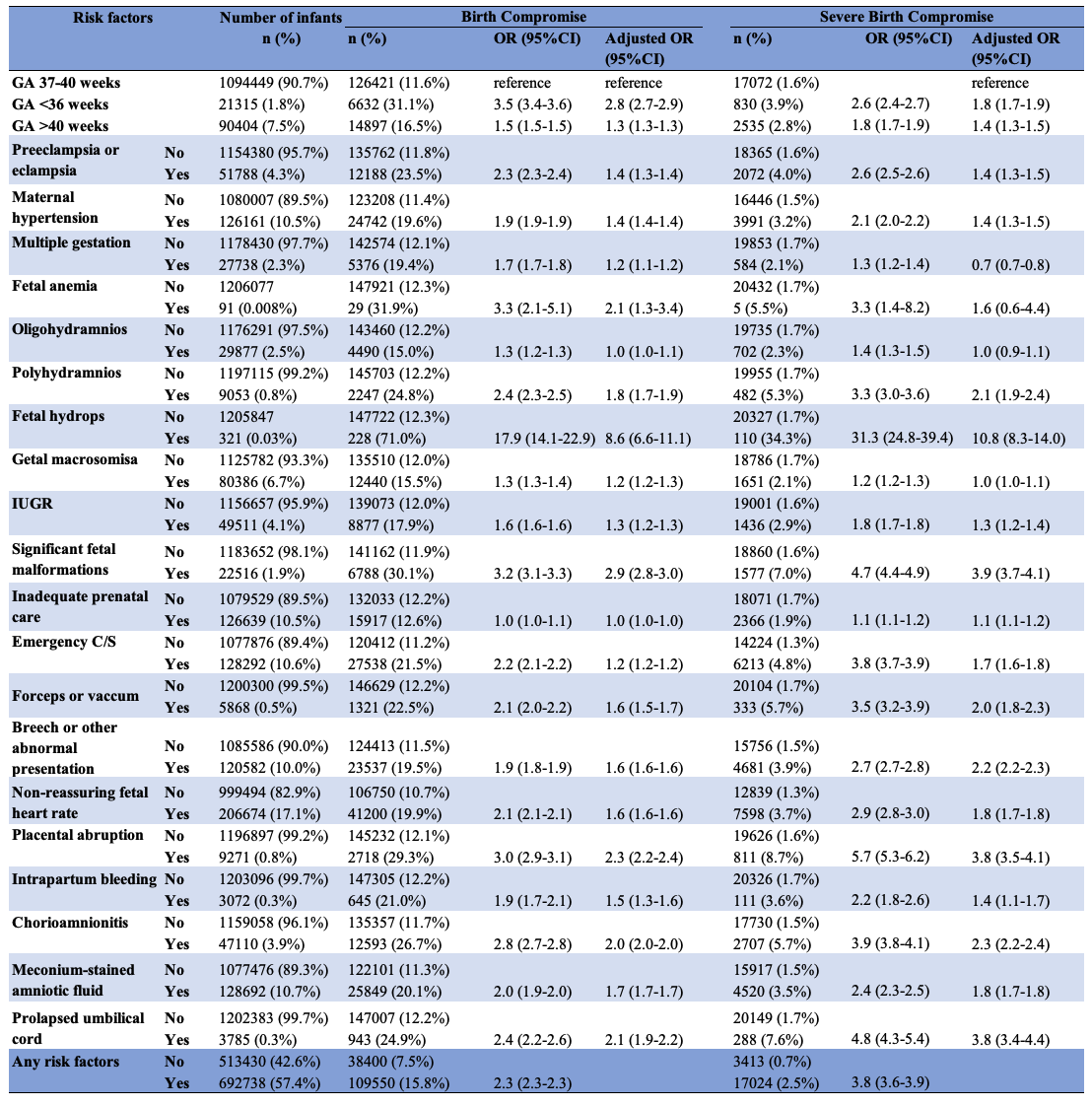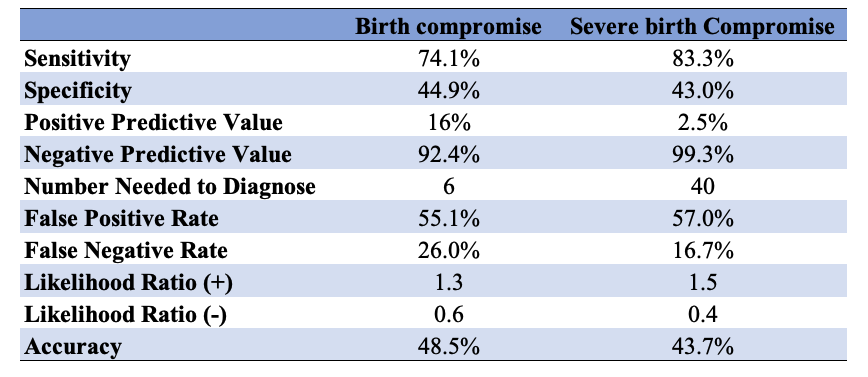Neonatal/Infant Resuscitation 3
Session: Neonatal/Infant Resuscitation 3
389 - Predictive Value of Guideline-Recommended Risk Factors for Neonatal Birth Compromise: A California Birth Cohort
Monday, April 28, 2025
7:00am - 9:15am HST
Publication Number: 389.6379
Siyuan Jiang, Children's Hospital of Fudan University, shanghai, Shanghai, China (People's Republic); Kristen E. Schaffer, University of California, San Diego School of Medicine, La Jolla, CA, United States; Gretchen Bandoli, University of california san diego, San Diego, CA, United States; Rebecca Baer, University of California, San Diego School of Medicine, La Jolla, CA, United States; Henry C. Lee, University of California, San Diego School of Medicine, La Jolla, CA, United States
- SJ
Siyuan Jiang, jiangsiyuan@fudan.edu.cn (she/her/hers)
Children's Hospital of Fudan University
shanghai, Shanghai, China (People's Republic)
Presenting Author(s)
Background: Neonatal resuscitation guidelines advocate using perinatal risk factors to anticipate the need for resuscitation, yet the predictive performance of these factors in recent populations is not well-documented.
Objective: To evaluate the association between currently recommended risk factors and birth compromise within a large California birth cohort, and assess the effectiveness of these factors in predicting birth compromise.
Design/Methods: In this retrospective cohort study of all live births ≥35 weeks’ gestation in California from 2016 to 2018, we used vital statistics and linked hospital records. Birth compromise was defined as any of the following: 1- or 5-minute Apgar score ≤7, death within 7 days, hypoxic-ischemic encephalopathy, acute respiratory disorders or respiratory support on day 1, and acute cardiovascular disorders or support on day 1. Severe birth compromise was defined as a 1-minute Apgar ≤3, 5-minute Apgar ≤5, death within 7 days, or hypoxic-ischemic encephalopathy. Twenty-one risk factors recommended in the 2021 Textbook of Neonatal Resuscitation were assessed.
Results: The study cohort comprised 1,206,168 live births. Overall, 12.3% of infants experienced birth compromise, and 1.7% had severe birth compromise. Birth compromise exhibited a U-shaped distribution by gestational age, with the lowest rate at 39 weeks (Figure 1). Multivariable logistic regression revealed that nearly all perinatal risk factors were independently associated with an increased risk of birth or severe compromise (Table 1). The guideline-recommended risk factors identified 57.4% of births as at-risk. Infants with one or more risk factors had 2.3 (95% CI, 2.3–2.3) times the risk of birth compromise and 3.8 (95% CI, 3.6–3.9) times the risk of severe compromise compared to those without any risk factors. However, the sensitivity and specificity for predicting birth compromise were 74.1% and 44.9%, respectively, and for severe compromise, 83.3% and 43.0% (Table 2). For each correctly predicted case of birth compromise, six infants were flagged as at-risk; for severe compromise, the number was 40. Additionally, 26.0% of birth compromise and 16.7% of severe cases were not captured by the current risk factors.
Conclusion(s): The guideline-recommended risk factors are independently associated with a increased risk of birth compromise. However, more than half of births are identified as at-risk, with notable rates of missed cases. Monitoring resuscitation needs is essential for each birth, irrespective of risk factors. Enhanced predictive tools are needed to improve risk stratification for neonatal resuscitation.
Figure 1 Distribution of birth compromise and its components by gestational age
.png) Birth compromise was defined as any of the following: 1- or 5-minute Apgar score ≤7, death within 7 days, hypoxic-ischemic encephalopathy, acute respiratory disorders or respiratory support on day 1, and acute cardiovascular disorders or cardiovascular support on day 1.
Birth compromise was defined as any of the following: 1- or 5-minute Apgar score ≤7, death within 7 days, hypoxic-ischemic encephalopathy, acute respiratory disorders or respiratory support on day 1, and acute cardiovascular disorders or cardiovascular support on day 1.Severe birth compromise was defined as a 1-minute Apgar ≤3, 5-minute Apgar ≤5, death within 7 days, or hypoxic-ischemic encephalopathy.
Acute respiratory condition was defined as any of the following: respiratory distress syndrome of newborn, meconium aspiration with respiratory symptoms, neonatal aspiration with respiratory symptoms, pneumothorax, pulmonary hemorrhage, invasive or non-invasive ventilation support on day 1.
Acute cardiovascular condition was defined as any of the following: neonatal cardiac failure, persistent fetal circulation, transient myocardial ischemia in newborn, cardiac arrest of newborn, cardiovascular support on day 1.
Table 1 Association between guideline-recommended perinatal risk factors and birth compromise

Table 2 Predictive value of the list of perinatal risk factors for birth compromise


